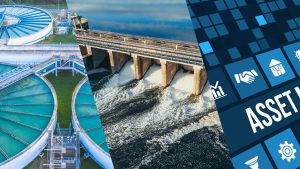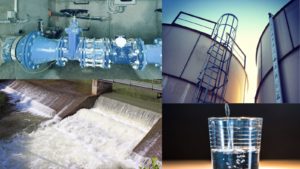Releasing untreated water to the environment can violate health standards and result in risk hazards that can cause irrecoverable loss of public trust and quality integrities of reclaimed water service enablers. Urban infrastructure keeps expanding by every minute, making wastewater treatment processes mandate dynamic maintenance and operational upgrades continuously based on inconsistent changes in asset health. The water treatment process that starts from wastewater collection, pumping, treatment and distribution is done by utilising an assortment of wastewater asset types. Trying to manage such assets conventionally, however, can be painstaking. This is why water treatment plants that recycle water for general purposes (mainly for irrigation, industrial needs, animal reservation centres and public parks) in the modern world accommodate new-age digital capabilities. The Industrial Internet of Things (IIoT), in particular, is a key technology that can drastically help wastewater asset management. This article will explain how a smart wastewater sensing system powered by IIoT is beneficial.
Key Challenges Faced by Wastewater Management
- Meeting the wastewater service demands of a ballooning population
- Saving energy during wastewater treatment processes
- Creating a self-sustaining system for asset management
- Efficient level monitoring systems prevent overflow and contamination
- Set autonomous risk mitigation protocols to prevent adverse health effects during operations
- Predicting the three main attributes of asset management asset cost, risk and performance
The Four Pillars of IIoT-Driven Sensor Technologies
There are four main pillars of IIoT-driven sensor technologies and modern wastewater systems:
IIoT-Based Data Streaming Technology
Data streaming technology refers to a data management technique which ingests a continuous data stream to analyse, filter, transform or enhance data in real-time. Once this is completed, the data is sent to the data store or another application or steam processing engine. The advantage of having such a technology is that it combines data feed from various sources, be it directly from the asset, through operational databases, weather reports, and other sources. This simplifies the data management tasks, thereby streamlining the analysing, filtering, transforming, combining or cleaning of data. It plays a central role in predictive analytics and detecting anomalous events.
Data Storage and Processing Paradigms
The amount of data that asset management includes is enormous. Traditionally trying to store such data was a challenging task, thereby affecting its reliability. Without proper storage, trying to process and analyse data becomes an issue. In IIoT, the data awaits to be processed and analysed. All IIoT does is collect the data, leaving AI to integrate it with analytical capabilities. IIoT data connected to an edge computing device helps the processing speed of data much faster. Hence, instead of sending data back to the data centre or cloud to identify patterns, IIoT has the capability to utilise computing power to rapidly analyse data in real time.
Wastewater Asset Predictive and Prescriptive Modelling
Predictive and prescriptive modelling is one of the most important aspects of wastewater asset management. Without this, there is no way that managers can take preventive measures that ensures wastewater is safe, is not wasted, and its supply is not interrupted. As IIoT is empowered by AI, wastewater systems powered by IIoT sensors can monitor the health of assets in real-time. Based on acoustic, vibrational and temperature patterns, IIoT can detect the smallest change and inform the asset manager. By infusing historical and current data, the system is, therefore, able to predict future anomalies. The best part of IIoT is its ability to accurately predict when the asset will break down. Hence, according to the critical nature of the anomaly, assets can be maintained in order.
Financial Loss Reduction in Wastewater Asset Management.
Asset-centric industries can be extremely costly to function and maintain. The wastewater industry is no different. The amount it goes to constructing and maintaining assets required for collection, pumping, treatment, and distribution is expensive. However, IIoT can help asset managers to make smart financial decisions. As it has the capability to provide futuristic insights into asset breakdowns, asset managers can construct futuristic budgets that are far ahead of ten years. Considering that the wastewater industry is, moreover, a utility service under the responsibility of the government, the limited financial resources available help public asset managers to be financially organised with a thorough understanding of risk factors.
A Fault-Free Wastewater Sensing System for the Future
The world is increasing its population year by year. With it, more expansive industrialisation projects are being carried out. The culmination of such developments has forced the wastewater industry to integrate sustainable practices to meet the safety standards of wastewater. Regarded as an essential utility sector in Australia, the wastewater industry has to be robust, innovative, dynamic and ready to employ better technology for better decision-making. As wastewater sensing systems must ensure that the treated wastewater meets all quality checks, the adoption of IIoT guarantees that treated wastewater sent for public consumption is safe. Arm yourself with this cost-effective advanced digital tool to increase public trust and eliminate unnecessary asset management costs, which can be prevented with the help of IIoT.







